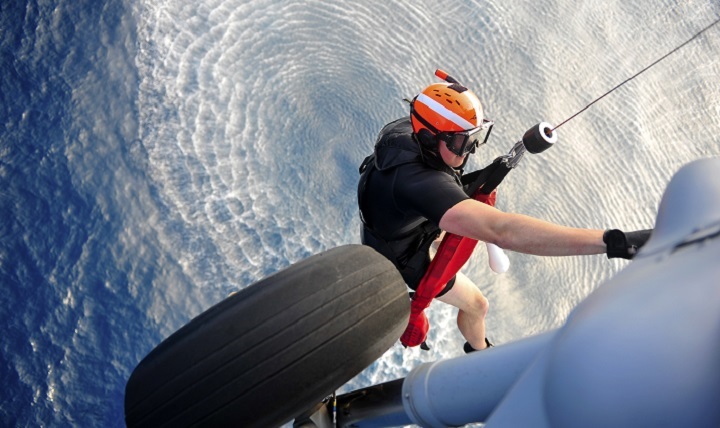Recommended Content:
Health Readiness
PENSACOLA, Fla. — The Naval Aerospace Medicine Institute (NAMI) launched a new course July 11 at the Navy Medicine Operational Training Center (NMOTC) in Pensacola for seven search and rescue hospital corpsmen.
The Flight Medic Course (FMC) is where search and rescue corpsmen will receive their required flight medical training.
In the past, this training was done mostly within Sailors' respective commands. No formal course existed to provide standardized training across the fleet until the Navy joined with the Army and Air Force in 2004 to provide a more structured education.
Now, the services have decided to go their separate ways with the last joint program ending April 1. The Navy course moved from Fort Rucker, Alabama, to Pensacola with many changes along the way.
"This program was starting from the ground up," said Navy Lt. Cmdr. Malissa Wickersham, FMC department head, who arrived at NAMI in January to take on the daunting task. "Logistically, it's been interesting."
The logistics included everything from ordering textbooks to placing a full-size simulation helicopter. NAMI set up simulated MH-60 Seahawk and V-22 Osprey aircraft, as they are the current operational standard in the fleet.
 A search and rescue corpsman prepares to deploy from a MH-60S Seahawk helicopter during search and rescue swimmer training. (U.S. Navy photo by Mass Communication Specialist Seaman Jordan Kirk-Johnson)
A search and rescue corpsman prepares to deploy from a MH-60S Seahawk helicopter during search and rescue swimmer training. (U.S. Navy photo by Mass Communication Specialist Seaman Jordan Kirk-Johnson)Aside from the logistical requirements, the curriculum has received minor changes as well. Wickersham said most of the course content will remain the same including foundations of international trauma life support, pediatric education for prehospital professionals, and advanced cardiovascular life support classes. NAMI has added more classroom study in anatomy and physiology, which has lengthened the course from five to seven weeks. This will also allow instructors to provide explanations of why certain techniques are used as they are teaching them – a common complaint that arose in the previous course.
The FMC was launched in only a matter of months, and Wickersham anticipates continued changes in the future as class sizes grow to the expected 12 students, perhaps even more as long as the 2-1 student-to-instructor ratio is maintained.
Wickersham is fully confident in the new FMC and its staff, despite the quick timeline to get the course set up and possible changes in the future.
"Every instructor here has been involved with search and rescue [operations], either in the billet or as an in-route care nurse in the back of a helicopter transporting patients," she said. "We've all been deployed to a war zone and have the real-life experience."
She also believes the challenges of getting the course up and running will all be worth it as the students come through for training.
"Teaching these hands-on skills to students is going to be a huge reward," Wickersham said.
The students in the class seem equally excited to be part of Navy Medicine's newest education program.
"What better way to practice Navy Medicine than in the back of a helicopter," said Navy Hospitalman Alexander Moser, a FMC student. "It feels respectable to make history and pave the way for future corpsmen to follow."
Navy Hospitalman Apprentice Jace R. Borowiak, also an FMC student agreed, adding, "When I wake up, my job is to help people. It's an adrenaline rush, and the fast-paced medicine is what I am looking forward to as a SAR corpsman."
Disclaimer: Re-published content may have been edited for length and clarity. Read original post.